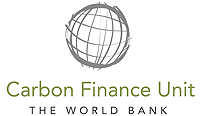Overview
The production of iron and steel requires the provision of a substance that provides both thermal energy and reducing power to convert iron ore into primary iron (called pig iron when solid or hot metal when in liquid form). This process is known as the iron ore reduction, which is mostly done with the use of coal coke, produced from coal of fossil origin. The basic equipment used in this process is the blast furnace.
This project activity proposed to use 100% of renewable charcoal - a solid source of bioenergy produced from sustainably grown wood biomass, established for the project - as the reducing agent in the iron ore reduction process. The use of renewable charcoal in the iron production process results in the replacement of fossil fuel - coal coke. The stock of renewable biomass grown for charcoal production also restores degrading grassland ecosystems, generating carbon stocks.
These multiple environmental benefits are given attention by the project entity through the implementation of an integrated project, which complies with the respective applicable methodologies and decisions of 17/CP.7 and 19/CP.9. The emissions from the plantations establishment (A/RCDM component) are accounted in the same registered project and not accounted in the industrial project to avoid double counting. However, some of the project entity’s new planted forests to supply the industrial production of iron with renewable biomass-based energy are established on lands not included in the boundaries of the A/R Clean Development Mechanism (CDM) component. These lands contained forest plantations after its last rotation established before 31st December 1989, as the project entity has historically used charcoal, and are, therefore, included in the boundaries of this Clean Development Mechanism (CDM) project activity. The production of iron under the new iron ore reduction system started in 2008, when the newly developed plantations reached the stage of harvesting.
Benefits
The project is a pioneer activity within its sector and has a substantial potential to be replicated by other organizations in Brazil, in Latin America and the Caribbean, as well as in many African and Asian developing countries. The project and its sustainability indicators clearly contribute to the Clean Development Mechanism (CDM)’s sustainable development dividend at an industrial scale.
